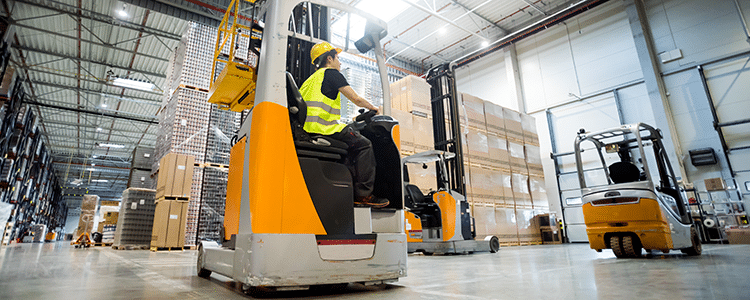Future-focused retailers are using artificial intelligence (AI) and machine learning technologies to improve transparency, balance inventory, and meet buyer demands. As they do so, they are achieving benefits such as:
- Smarter demand forecasting
- Quicker anomaly detection
- Quicker issue identification
- More accurate delivery predictions
- Real-time route optimization
- Optimized supplier relationship management
Today, we’re exploring the role of machine learning in retail supply chain operations. How does this technology work, and what benefits does it have to offer in the retail industry?
The 2025 Top 10 ERP Systems Report
What vendors are you considering for your ERP implementation? This list is a helpful starting point.
Benefits of Machine Learning in Retail Supply Chain Management
Machine learning is a type of AI. It’s a process that allows a system to learn a set of rules in an automated environment. Once that base knowledge is set, the machine can deliver smart recommendations that are more specific and accurate than those made from historical data alone.
This technology is especially beneficial in the retail sphere. Consider the vast amount of data that retailers generate (this is especially true in the eCommerce space). These individual points create a collective force that determines supply and demand.
With machine learning and AI technology, retailers can automatically capture and analyze these inputs. The technology searches for patterns in data and remembers these patterns when making predictions. This enables quicker, better-informed decision making and more accurate retail planning.
Ultimately, overhead costs decrease as employees gain quicker access to buyer information and transaction histories. This helps retailers improve customer service through more efficient troubleshooting and product support.
Additional benefits include:
The Ability to Address Supply Chain Vulnerabilities
Over the last 18 months, companies have had to grapple with a much slower supply chain. Terminal closures and port bottlenecks continue to slow the movement of goods, which means inventories are suffering, along with customer satisfaction.
The most common supply chain vulnerabilities are occurring in a few key areas:
- Demand forecasting
- Supplier network resiliency
- Product design complexity
- Transportation and logistics
- Financial flexibility
- Organizational maturity
Complications in any of these areas can create a ripple effect. However, machine learning can make retailers more resilient. It does so by making operations more visible and transparent, so decision-makers can identify potential issues before they arise.
Visibility Into Demand Impact Data
One of the most exciting applications of machine learning is in demand forecasting. There are many different variables that can affect a retailer’s supply/demand balance. Let’s look at these in greater detail:
- Recurring Variations – These are time-sensitive variations that affect retail demand. They occur on a recurring basis that you can predict. Examples include spikes or dips in sales based on the time of week or season.
- Internal Changes – These are deliberate measures that a retailer puts into place to influence sales. They include in-store and online promotions, price changes, and display updates.
- External Events – These are factors that are beyond a retailer’s control. Examples include changes in the weather or local events that affect foot traffic to your store.
- Unanticipated Factors – These are impacts to supply/demand that a retailer cannot see coming. As such, they cannot gauge how it will affect their performance. An example would be a new competitor opening just down the street.
With machine learning, retailers can better understand these variables. Operating in a data-rich retail environment means staying on top of challenges and addressing them before they affect sales.
Retailers can also use machine learning to understand the relationships between these variables. Machine learning has an advantage over traditional time-series models that analyze data points collected over time. Those models are designed to use past patterns to project future demand. While they are effective in this way, they do little to illuminate the “why” behind the connection. Executives also must manipulate baseline forecasts to determine how interval changes will affect future sales.
Machine learning automates, simplifies, and streamlines this process. It takes many different factors into account and delivers a realistic forecast. The result is a report that’s more accurate than time-series modeling.
Piecing Together the Retail Supply Chain Puzzle
Supply chain disruptions and breakdowns continue to occur due to pandemic-related shortages. It’s imperative to look at ways to use AI and machine learning to fortify your retail supply chain environment.
Interested in learning more about retail technology and supply chain management systems? Want to learn what ERP systems employ machine learning in their supply chain modules? Our ERP consultants can help you select the right technology to optimize your retail supply chain. Request a free consultation below to learn more.













